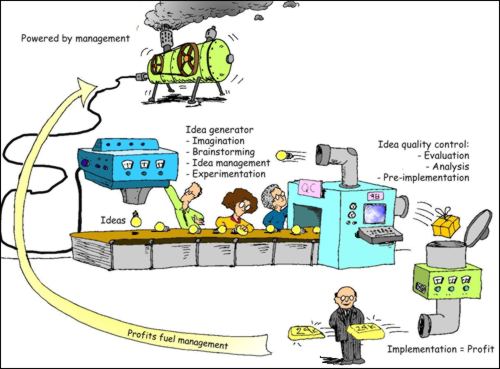Need to Innovate? Promote Hot Cognition
A typical assignment for a cognitive designer is to create a high-impact innovation program for a client organization. The goal is to design a socio-technical system made up of a coherent set of policies, rewards, management behaviors, development experiences, collaboration systems and even business models that will increase the ability of the organization to turn new ideas into products and services.
[Image source: Jenni Idea Management]
 The idea factory shown above may be the desired future state given the traditional view of mind in business but what do we know about how minds actually innovate at work and in the market? Recent commentary in the science journal Nature on The Innovative Brain, provides three potential insights for cognitive designers.
The idea factory shown above may be the desired future state given the traditional view of mind in business but what do we know about how minds actually innovate at work and in the market? Recent commentary in the science journal Nature on The Innovative Brain, provides three potential insights for cognitive designers.
First, innovators such at entrepreneurs are better, compared to managers, at making decisions that involve “hot” cognition (risk, emotion) but not decisions that involve “cool” cognition (facts, logic). This means better economic decision-making under stressful conditions.
Second, innovators have a particular psychographic profile (set of cognitive characteristics and needs) that shows up as relatively high personality impulsiveness and cognitive-flexibility measures.
Third, and I quote, ” ‘Hot’ decision-making, involving the evaluation of reward and punishment, is essential to the entrepreneurial process and may be possible to teach, argue Barbara Sahakian and her coauthors.”
The data supporting these conclusions is preliminary. But the implications they have for designing innovation programs based on how minds actually work is strong.
